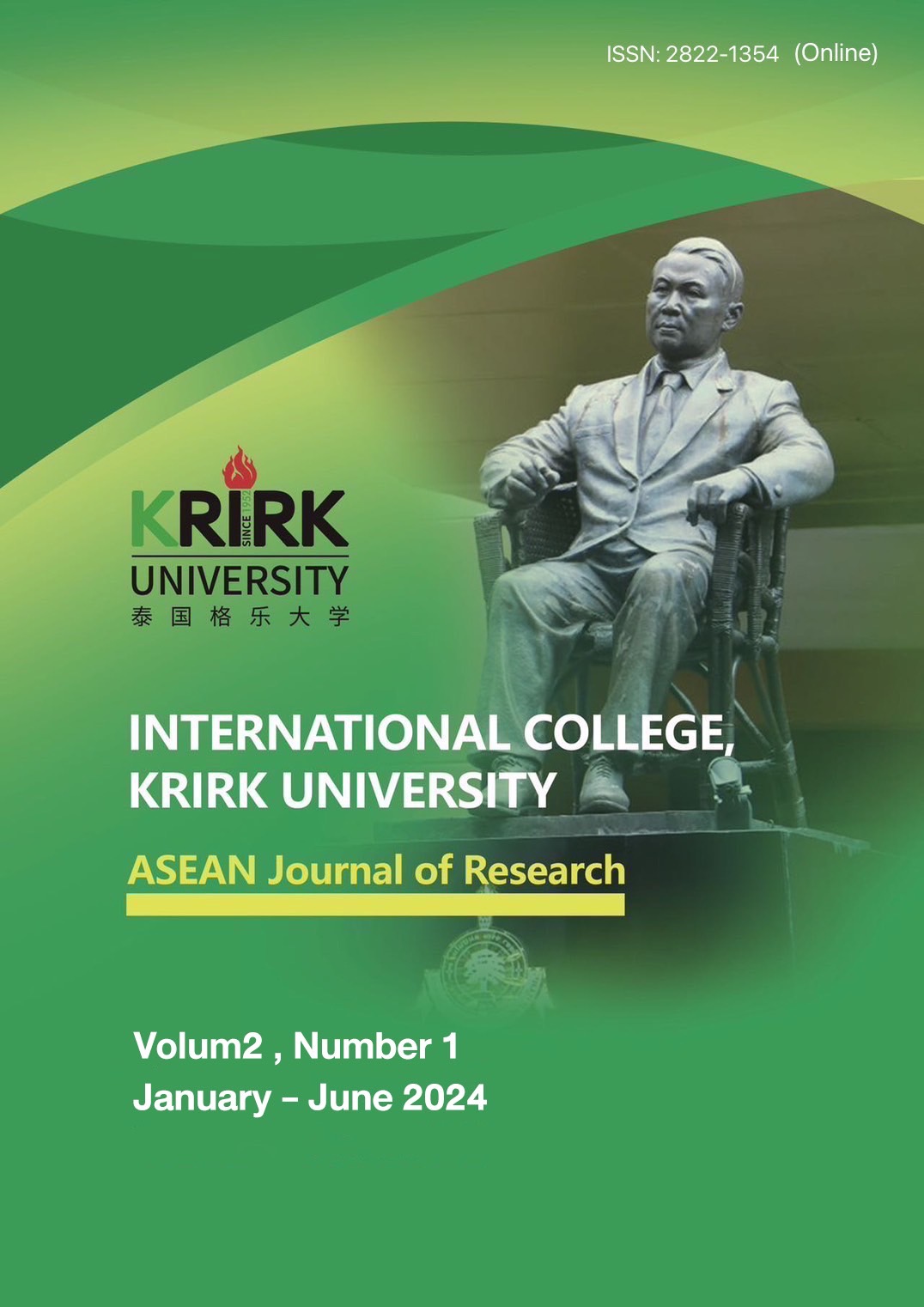Psycho-Social Variables as Predictors of Sexual Abuse among In-School Adolescents in Lagos Metropolis
Abstract
This study examined psycho-social variables as indicators of sexual abuse among adolescents in secondary schools in Kosofe local government of Lagos state. The objectives of this study are to assess the influence of poverty, male dominance, rapid social change, collective and interpersonal violence and child labour as indicators of sexual abuse among adolescents in secondary schools in Kosofe local government district of Lagos State. A descriptive survey research design was adopted. A simple random technique was used to select a sample size of 700 students from ten secondary schools in the research site. Data was collected using a structured questionnaire. Descriptive analyses were done with frequencies and percentages. Inferential analyses were done with the use of Chi-square tests. The results revealed among others that poverty has a significant influence as a predictor of sexual abuse among adolescents in secondary schools in Kosofe local government of Lagos state (x2= 221.83 p< 0.05). Also, the results show that male dominance has a significant influence as an indicator of sexual abuse among the sample (x2= 127.41, p < 0.05). Conclusively, there are significant influences of poverty, male dominance, rapid social change, collective and interpersonal violence and child labour as indicators of sexual abuse. It was recommended that government should ensure provision of adequate policy in protecting children and adolescents who have gone through sexual abuse and violence and also ensure implementation of policies that prevent child labor in society while also providing alternatives such as enrolment in school and vocational activities for adolescents with no other source of livelihood.
References
African Development Forum (2018). Ending violence against women in Africa, Addis Ababa, Ethiopia.
Aylott J. (2019). “Preventing rape and sexual assault of people with learning disabilities,” British Journal of Nursing, 8(13). 871–876.
Borwankar, R., Diallo, R. & Sommerfelt, A.E. (2018). Gender-based violence in sub-Saharan Africa: A review of demographic and health survey findings and their use in national planning, Washington DC: USAID/AFR/SD and Africa’s Health in 2010/AED.
Brown, D.W., Riley, L., Butchart, A., Meddings, D.R., Kann, L. & Harvey, A.P. (2009). “Exposure to physical and sexual violence and adverse health behaviours in African children: results from the Global School-based Student Health Survey,” Bull World Health Organization, 87(6), 447-455.
Bruck, M., Ceci, S.J. & Principe, G.F. (2016). “The child and the law,” In K.A. Renninger, I.E. Sigel, W. Damon & R.M. Lerner, eds., Handbook of child psychology, 6th ed., Hoboken, NJ: Wiley, 766-816.
Callands, T.A., Sipsma, H.L., Betancourt, T.S. & Hansen, N.B. (2013). “Experiences and acceptance of intimate partner violence: associations with sexually transmitted infection symptoms and ability to negotiate sexual safety among young Liberian women,” Culture, Health and Sexuality, 15(6), 680-694.
Crittenden, C.A. & Wright, E.M. (2013). “Predicting patriarchy: Using individual and contextual factors to examine patriarchal endorsement in communities,” Journal of Interpersonal Violence, 28(6), 1267-1288.
Crosson-Tower, D. (2012). Understanding child sexual abuse and neglect, 5th. Ed, Boston, MA: Allyn and Bacon.
Jewkes, R. & Abrahams, N. (2012). “The epidemiology of rape and sexual coercion in South Africa: An overview,” Social Science and Medicine, 55(7), 1231-1244.
Jewkes, R., Vundule, C., Maforah, F. & Jordaan, E. (2011). “Relationship dynamics and teenage pregnancy in South Africa,” Social Science & Medicine, 52(5), 733-744.
Jinadu, M.K. (2009). “Combating child abuse and neglect in developing and newly industrializing countries: a unique primary health care approach,” Child Abuse and Neglect, 10(1), 115-120.
Kennedy, S.B., Atwood, K.A., Harris, A.O., Taylor, C.H., Gobeh, M.E., Quaqua, M., Woods, D.V., Bee, E.M. & Warlonfa, M. (2012). “HIV/STD risk behaviors among in-school adolescents in post-conflict Liberia,” Journal of the Association of Nurses in AIDS Care, 23(4), 350-360.
Korbin, J.E. (2011). “Cross-cultural perspectives and research directions for the 21st century.” Child Abuse & Neglect, 15, 67-77.
Lalor, K. (2014). “Child sexual abuse in sub-Saharan Africa: A literature review, Child Abuse and Neglect, 28(4), 439-460.
Lalor, K. (2008). “Child sexual abuse and HIV transmission in sub-Saharan Africa,” Child Abuse Review, 17(2), 94-107.
Lewis, I.R. (2012). “At risk: The relationship between experiences of child sexual abuse and women's HIV status in Papua New Guinea, Journal of Child Sexual Abuse, 21(3), 273-294.
Loening, W.E. (2011). “Child abuse among the Zulus: A people in cultural transition,” Child Abuse & Neglect, 5(1), 3-7.
Mandalazi, P., Banda, C. & Umar, E. (2013). “Street children's vulnerability to HIV and sexually transmitted infections in Malawian cities,” Malawi Medical Journal, 23(1), 1-4.
Moore, A.M., Awusabo-Asare, K., Madise, N., John-Langba, J. & Kumi-Kyereme, A. (2017). “Coerced first sex among adolescent girls in sub-Saharan Africa: Prevalence and context,” African Journal of Reproductive Health, 11(3), 62-82.
Pinheiro, P.S. (2016). World report on violence against children, Geneva: United Nations.
Senn, T.E., Carey, M.P. & Vanable, P.A. (2018). “Childhood and adolescent sexual abuse and subsequent sexual risk behavior: Evidence from controlled studies, methodological critique, and suggestions for research, Clinical Psychology Review, 28(5), 711-735.
Silberschmidt, M. (2011). “What would make men interested in gender equality? Reflections from East Africa,” in A. Cornwall, J. Edstrom & A. Greig, eds., Men and development: Politicizing masculinities, London and New York, NY: Zed Books, Ch.8.
UNDP (2009). Human development report 2009, New York, NY: UNDP.
UNODC (2009). Global report on trafficking in persons, available at: https://www.unodc.org/documents/Global_Report_on_TIP.pdf.
Van Niekerk, J. (2014). "At the coalface: The childline experience," In Sexual Abuse of Young Children in Southern Africa, L. Richter, A. Dawes, & C. Higson-Smith, eds., Cape Town: HSRC Press, 263-75.
Downloads
Published
How to Cite
Issue
Section
License
Copyright (c) 2024 ASEAN Journal of Research

This work is licensed under a Creative Commons Attribution-NonCommercial-NoDerivatives 4.0 International License.
The Copyright belongs to the ASEAN Journal of Research



